RN Adult Medical Surgical Online Practice 2019 B - AH2
Document Content and Description Below
A nurse is assessing for compartment syndrome in a client who has a short leg cast. Which of the following findings should the nurse identify as a manifestation of this condition? A. Bounding pedal ... pulse B. Capillary refill less than 2 seconds C. Pain that increases with passive movement D. Areas of warmth on the cast Rationale: The nurse should identify that a client who has compartment syndrome experiences pain that increases with passive movement. Compartment syndrome results from a decrease in blood flow in the extremity caused by a decrease in the muscle compartment size due to a cast that is too tight. A nurse is providing teaching to a client who has a severe form of stage II Lyme disease. Which of the following statements made by the client reflects an understanding of the teaching? A. "I will need to take antibiotics for 1 year" B. "My partner will need to take an antiviral medication" C. "My joints ache because I have Lyme disease" D. "I will bruise easily because I have Lyme disease" Rationale: Lyme disease is a vector-borne illness transmitted by the deer tick. The disease course occurs in three stages beginning with joint and muscle pain in stage I. If left untreated, these symptoms continue throughout stage II and, by stage III, become chronic. Other chronic complications include memory problems and fatigue. A nurse is preparing to administer phenytoin 600 mg PO daily to a client. The amount available is oral solution 125 mg/5 mL. How many mL should the nurse administer? (Round the answer to the nearest whole number) A: 24 A nurse is caring for a client who has an arterial line. Which of the following actions should the nurse take? A. Flush the line before administering antibiotics B. Position the client in Trendelenburg to obtain measurements C. Have the client bear down when readings are obtained D. Place a pressure bag around the flush solution Rationale: The nurse should place a pressure bag around the flush solution of 0.9% sodium chloride because the pressure from an artery is greater than that of the line. An arterial line is not appropriate access for administering antibiotics. The nurse should use the arterial line to obtain arterial blood gas samples and monitor hemodynamic pressures. A nurse is updating the plan of care for a client who is receiving chemotherapy. Which of the following findings should the nurse identify as the priority? A. Report of sore throat B. Report of memory loss C. Alopecia D. Mucositis Rationale: When using the urgent vs. nonurgent approach to client care, the nurse should determine that the priority finding is a report of a sore throat, which could be a manifestation of an infection. The client is at risk for neutropenia due to myelosuppression; therefore, an infection could lead to sepsis.A nurse is reviewing the medical record of a client who has systemic lupus erythematosus (SLE). Which of the following findings should the nurse expect? A. Facial butterfly rash B. Bradycardia C. Esophagitis D. Interstitial fibrosis Rationale: A butterfly rash is a manifestation of SLE. It appears as a dry, red rash on the client's cheeks and nose and can disappear during times of remission. A nurse is planning care for a client who is postoperative following a parathyroidectomy. Which of the following actions should the nurse identify as the priority? A. Use pillows to support the client's head and neck B. Offer opioid medication C. Place a tracheostomy tray at the bedside D. Place the client in semi-Fowler's position Rationale: The priority action the nurse should take when using the airway, breathing, circulation approach to client care is to place a tracheostomy tray at the client's bedside in case of airway obstruction. A nurse is assessing a client who has diabetes insipidus. Which of the following findings should the nurse expect? A. Low urine specific gravity B. Hypertension C. Bounding peripheral pulses D. Hyperglycemia Rationale: An expected finding for a client who has diabetes insipidus is a urine specific gravity between 1.001 and 1.005. Decreased water reabsorption by the renal tubules is caused by an alteration in antidiuretic hormone release or the kidneys' responsiveness to the hormone. A nurse is providing teaching to a client who has stage II cervical cancer and is scheduled for brachytherapy. Which of the following instructions should the nurse include? You will need to stay still in the bed during each treatment session Rationale: The nurse should instruct the client that they will need to remain on bed rest with very limited movement because excessive movement can cause the radioactive source to become dislodged. The nurse should instruct the client that there is not excreted radiation between treatments. There will likely be between two and five treatments, once or twice each week. Blood in the urine is an adverse effect of brachytherapy and is not an expected finding. A nurse is planning care for a client who is scheduled for a thoracentesis. Which of the following interventions should the nurse include in the plan? A. Encourage the client to take deep breaths after the procedure B. Assist the client to hold their arms up during the procedure C. Instruct the client to remain NPO after midnight prior to the procedure D. Keep the client on bedrest for 8 hr following the procedure Rationale: After a thoracentesis, the client should deep breathe to re-expand the lung. A nurse is caring for a client who is receiving a blood transfusion. The client becomes restless, dyspneic, and has crackles noted to the lung bases. Which of the following actions should the nurse anticipate taking? A. Administer an antihistamine B. Slow the infusion rate C. Give the client a corticosteroid D. Elevate the client's lower extremities Rationale: Dyspnea, restlessness, and the onset of crackles during a blood transfusion are manifestations of circulatory overload. The nurse should slow or stop the infusion to improve the client's ability to breathe, place the client in an upright position, and notify the provider. The provider might prescribe a diuretic to alleviate the fluid overload [Show More]
Last updated: 1 year ago
Preview 1 out of 17 pages
Instant download
.png)
Buy this document to get the full access instantly
Instant Download Access after purchase
Add to cartInstant download
Reviews( 0 )
Document information
Connected school, study & course
About the document
Uploaded On
Dec 11, 2022
Number of pages
17
Written in
Additional information
This document has been written for:
Uploaded
Dec 11, 2022
Downloads
0
Views
81

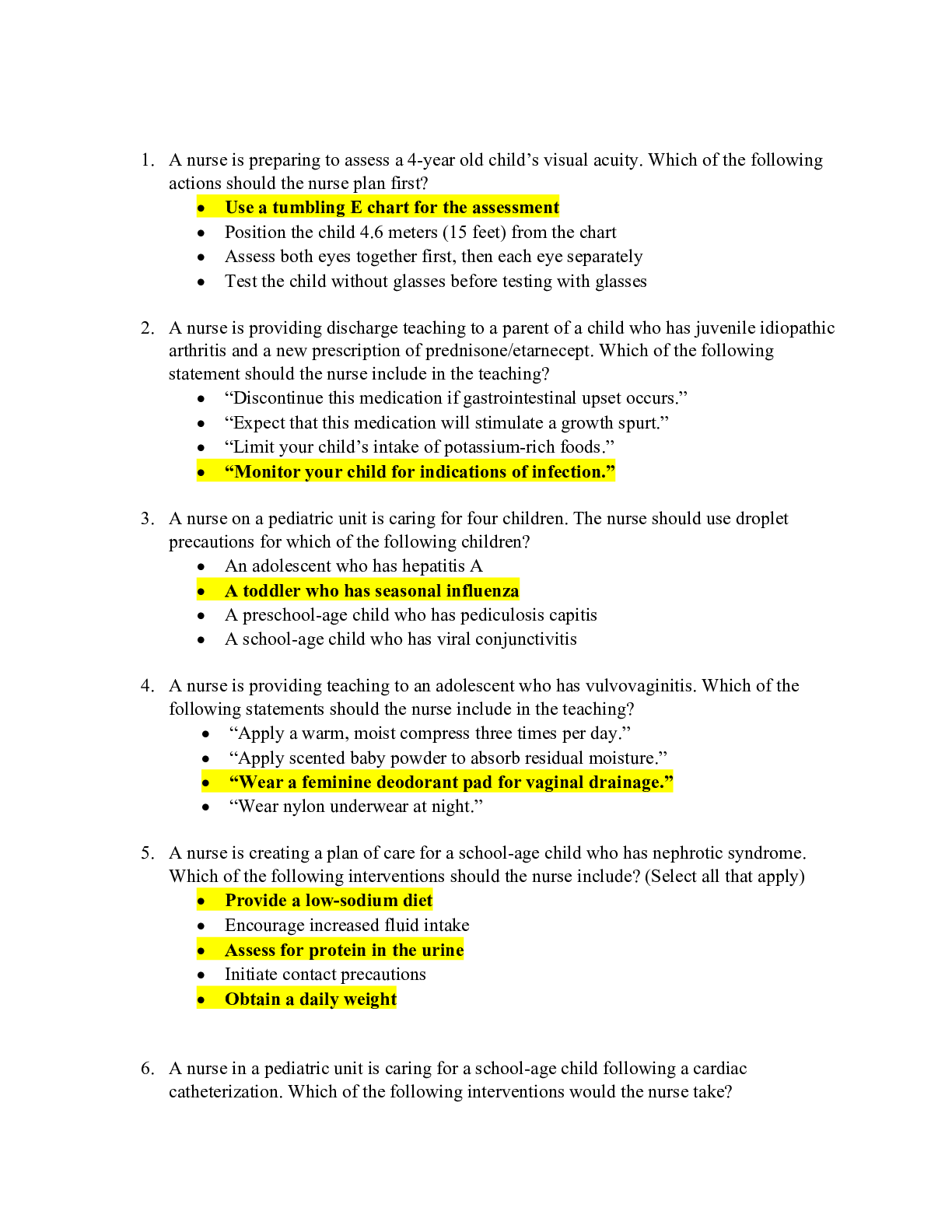
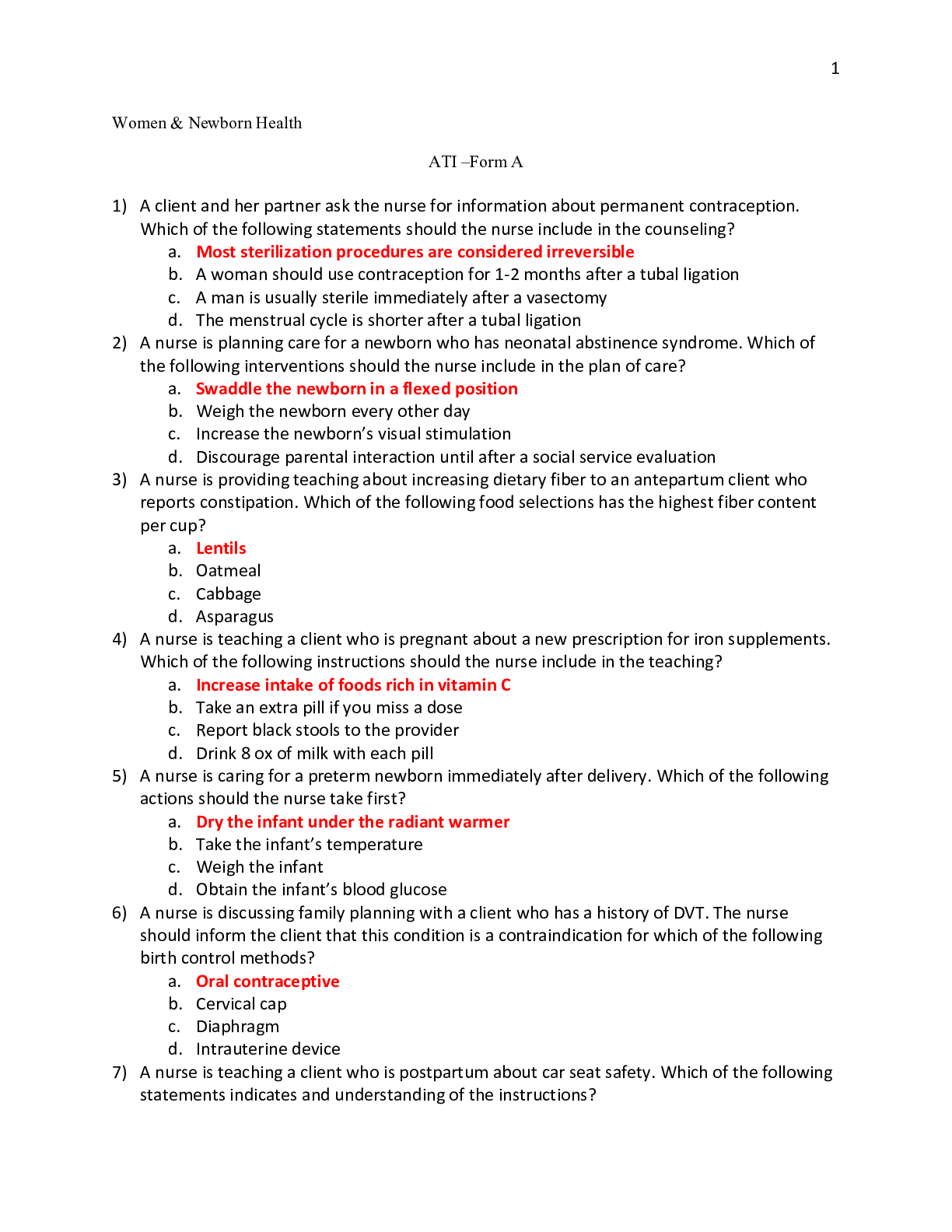

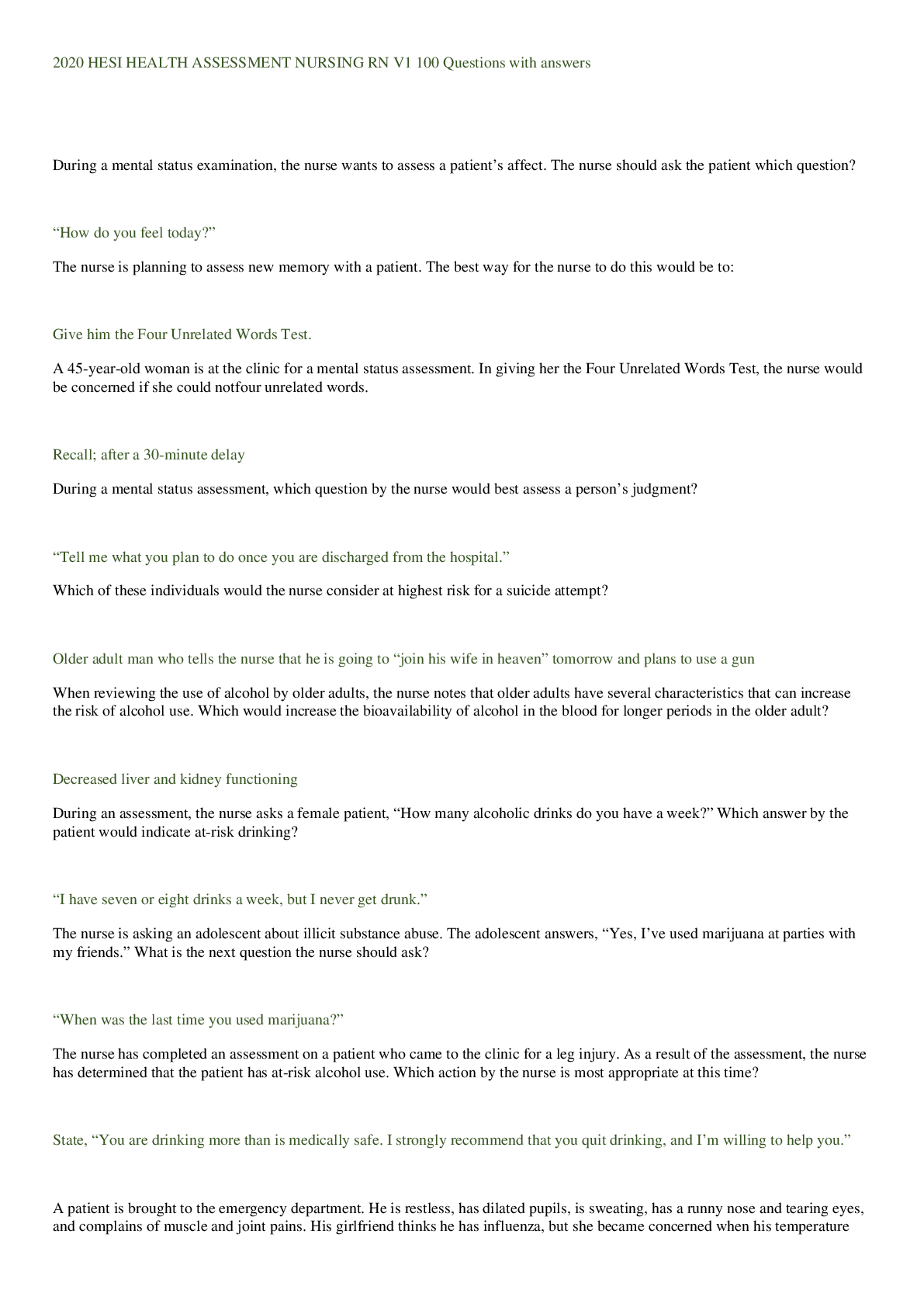

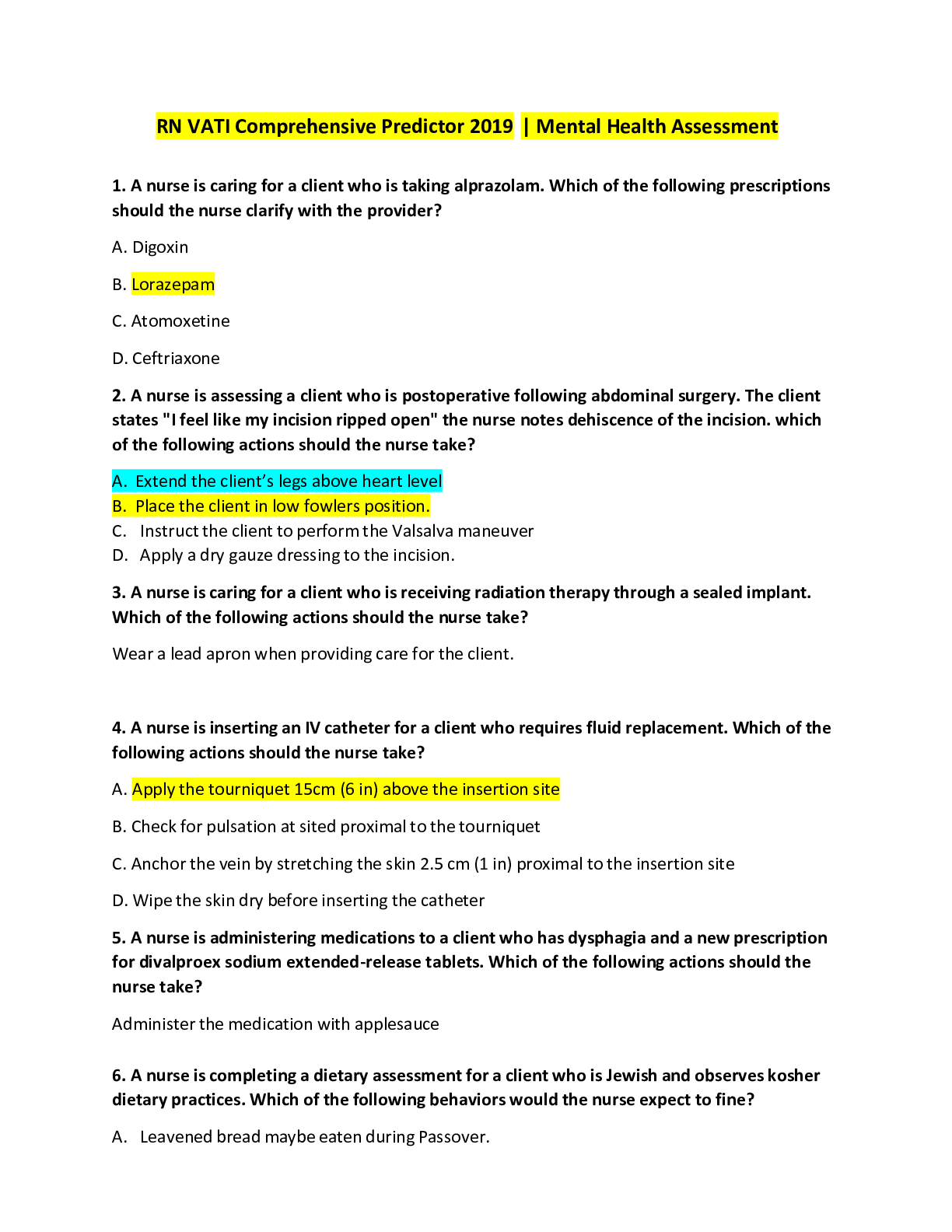
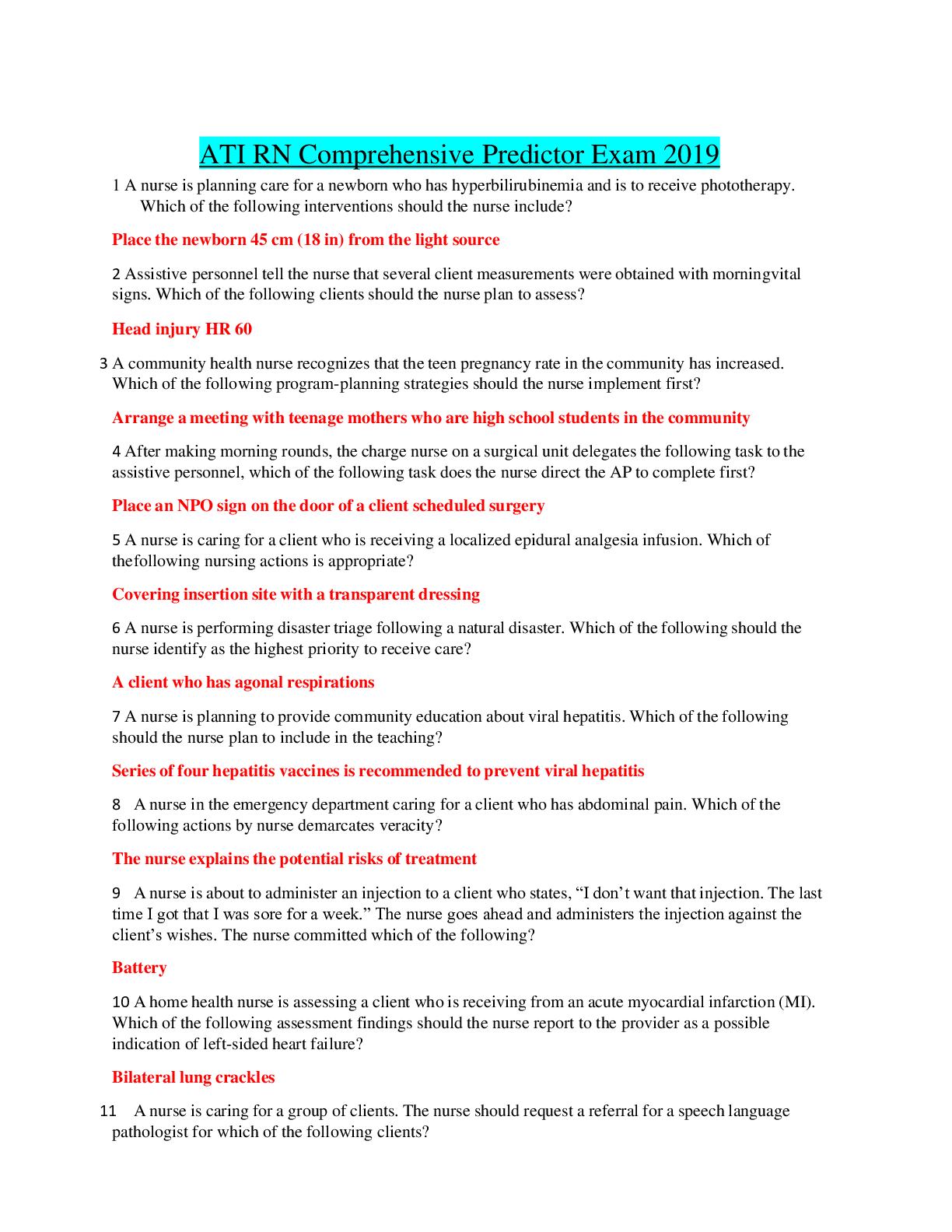

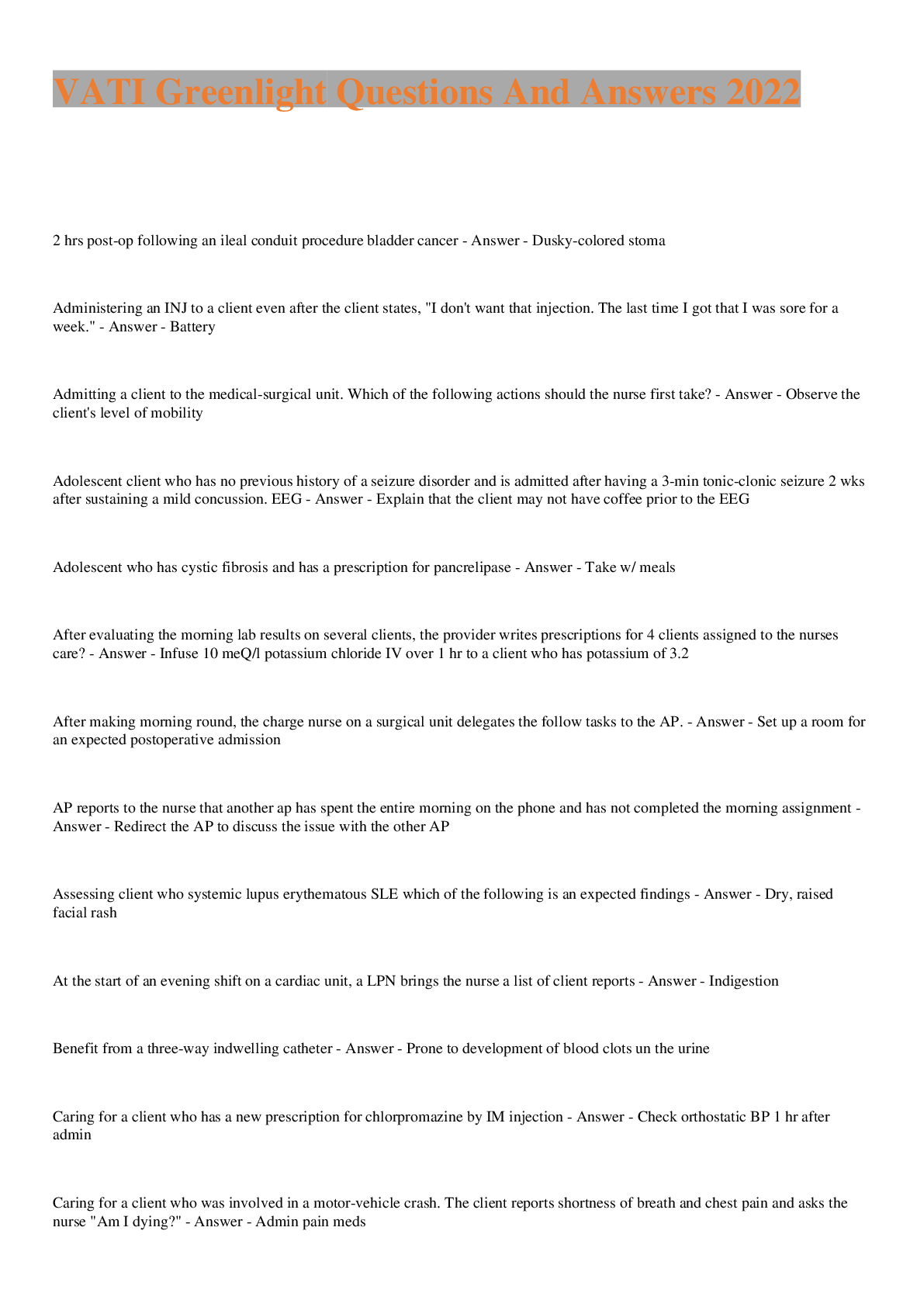
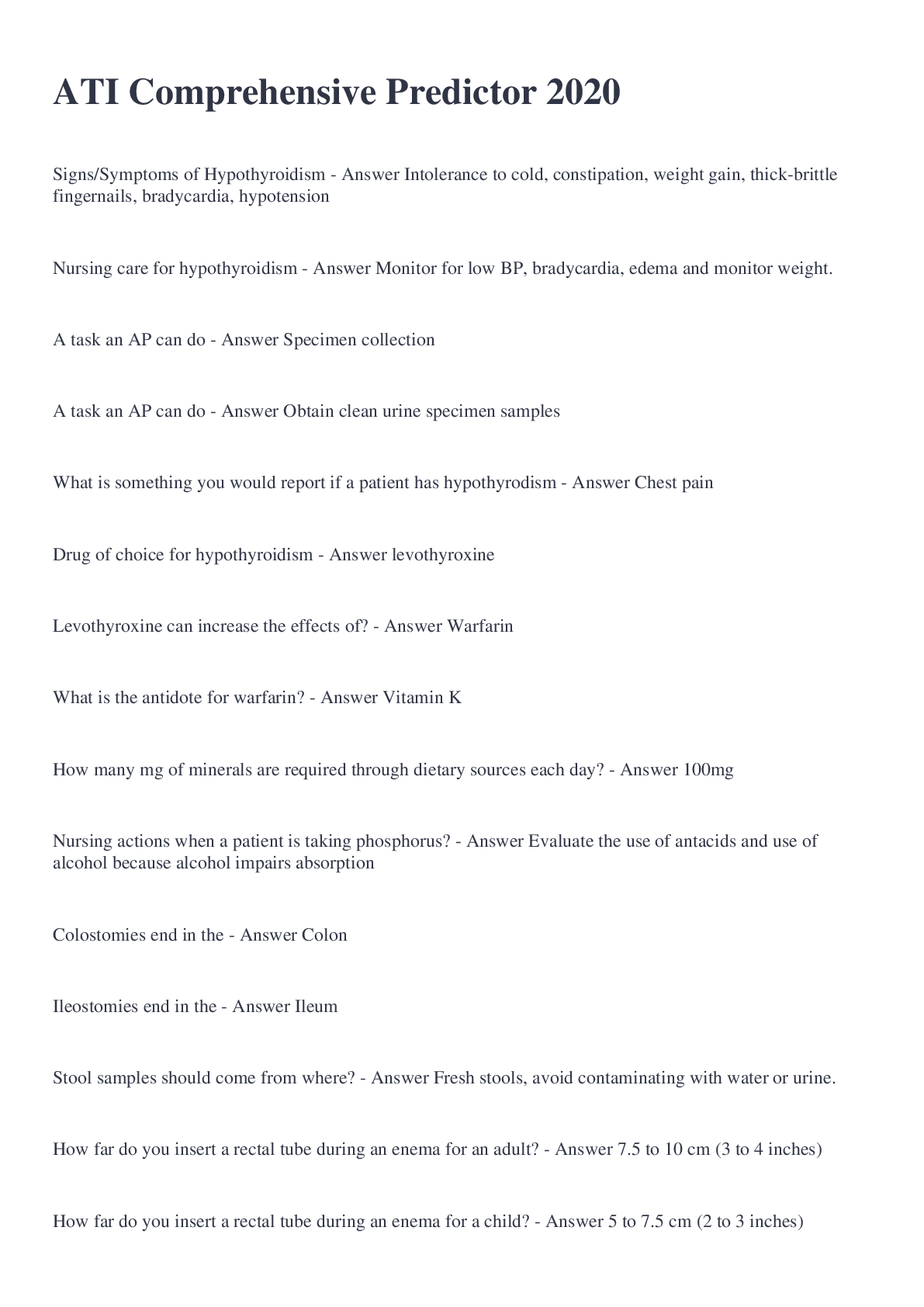
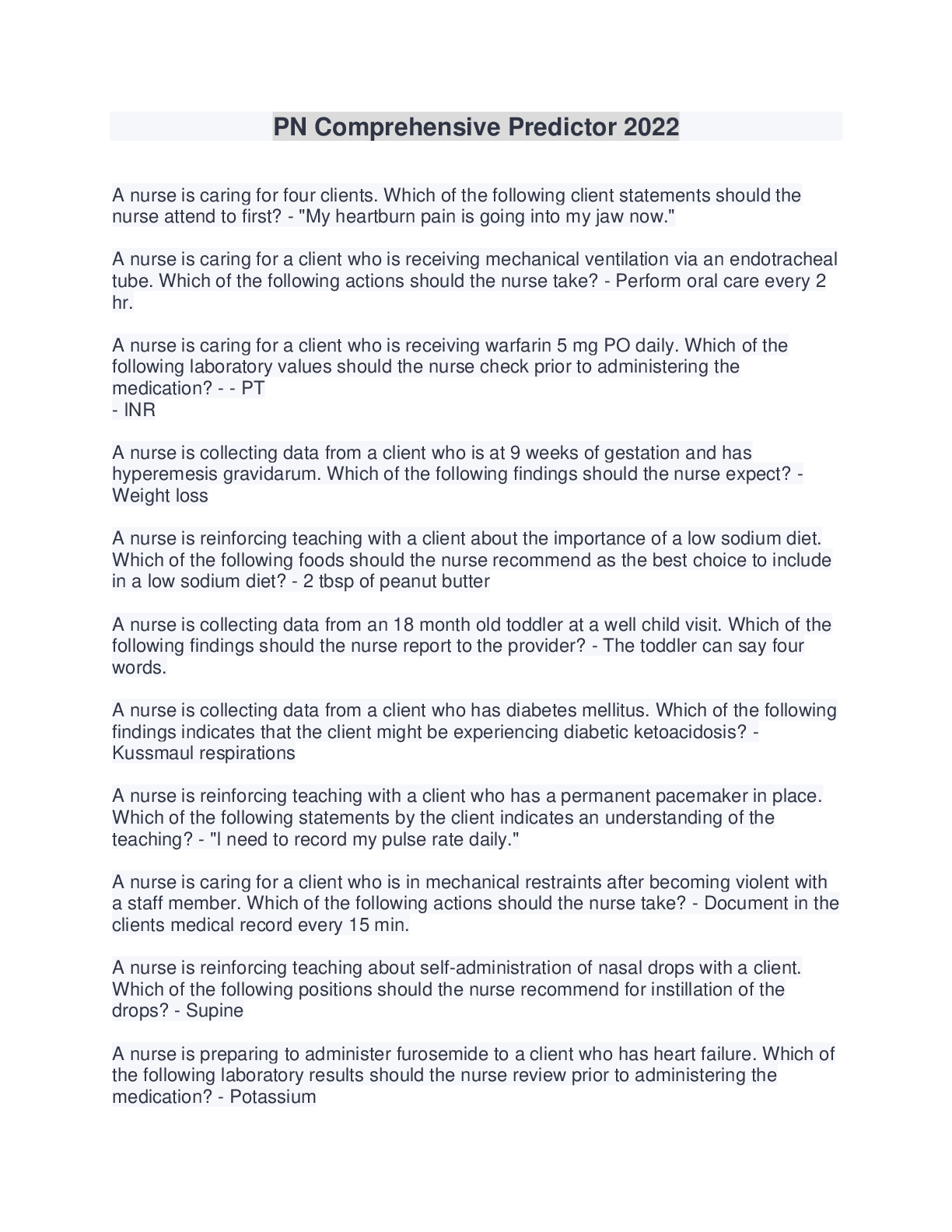
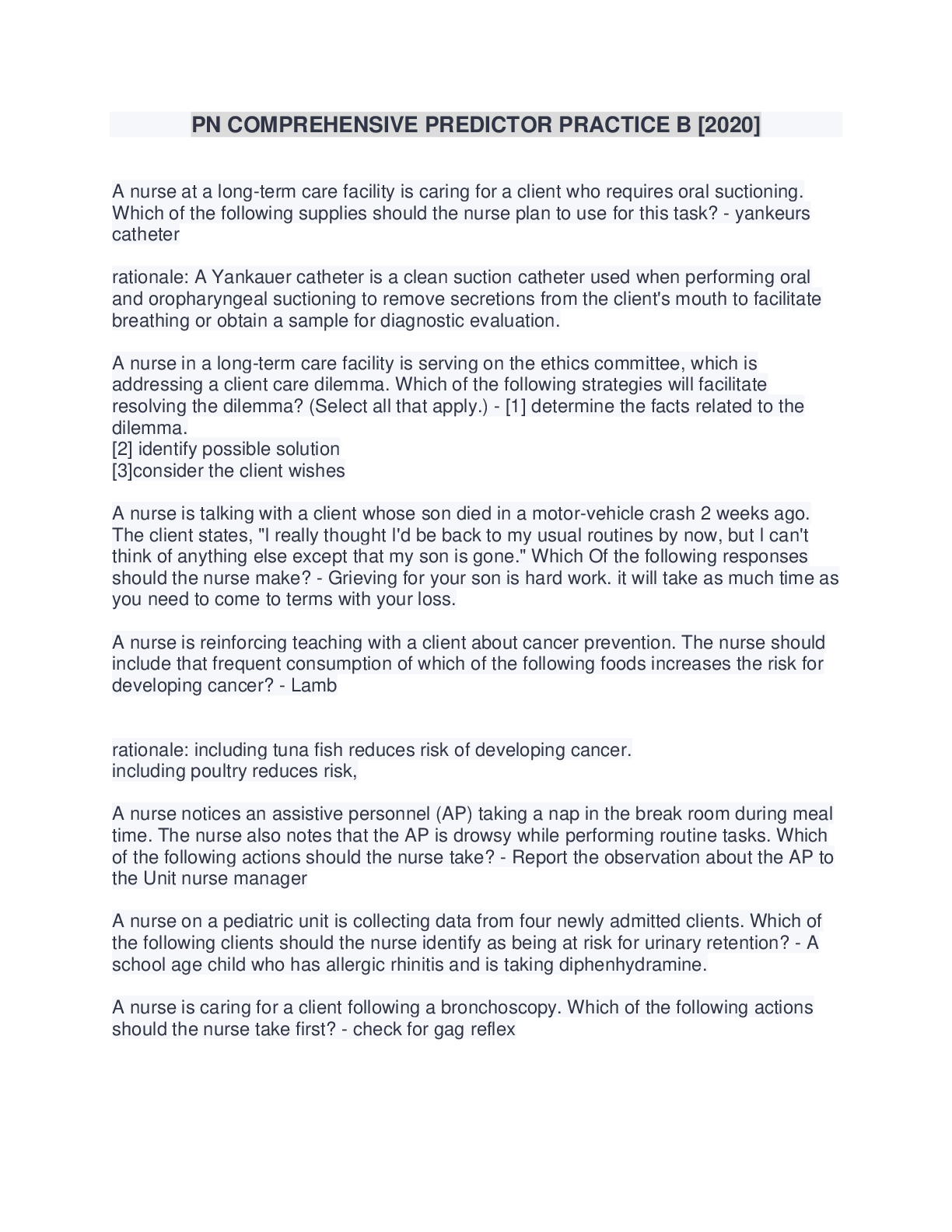
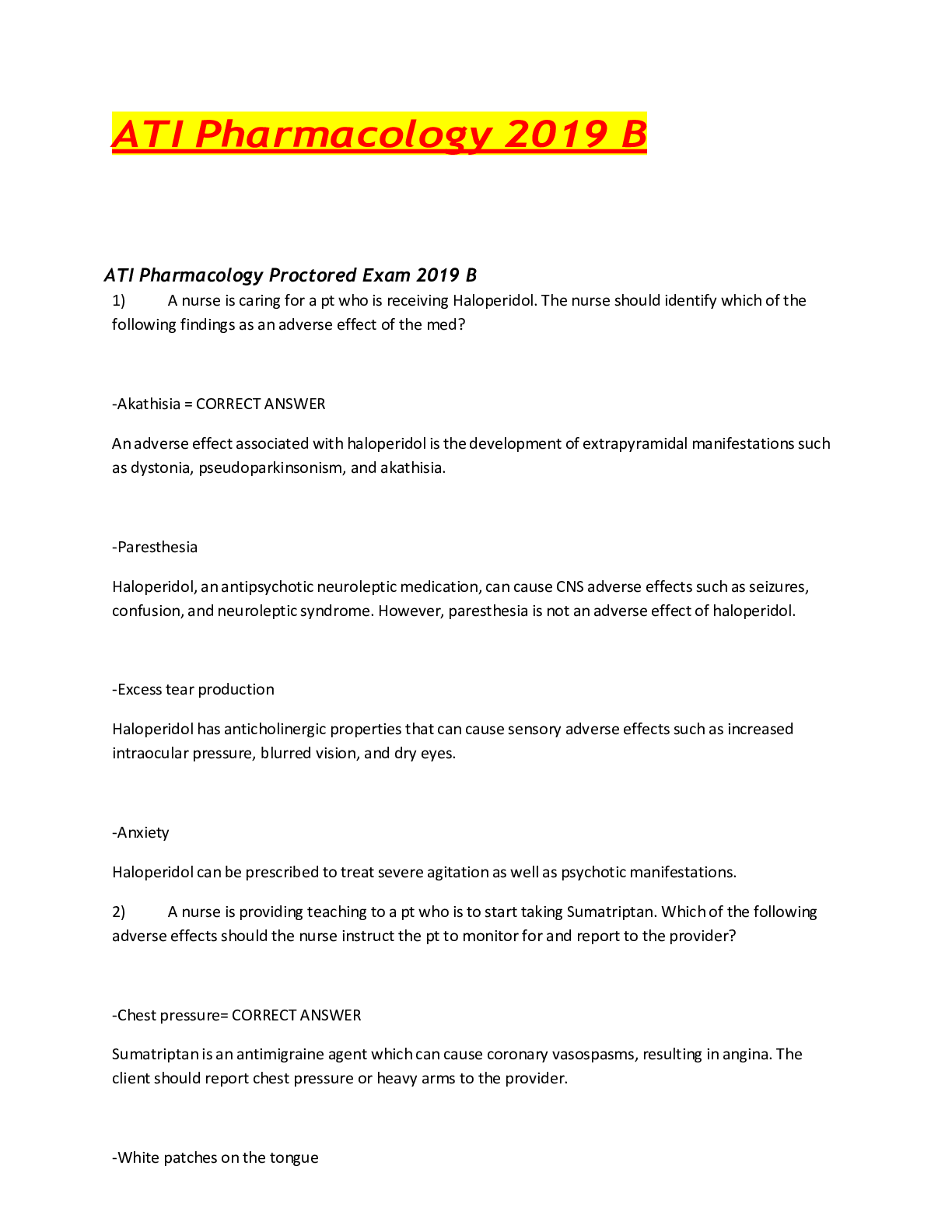
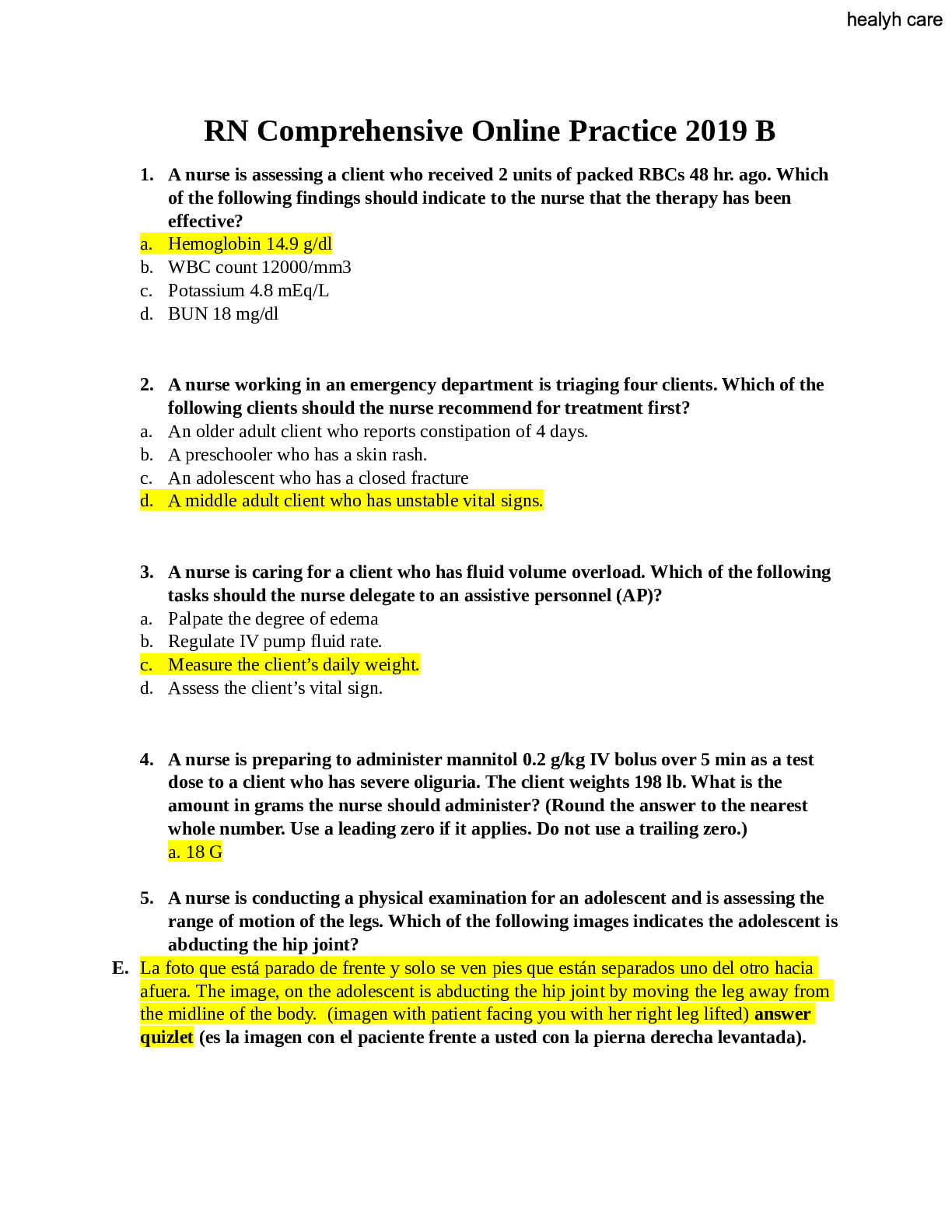
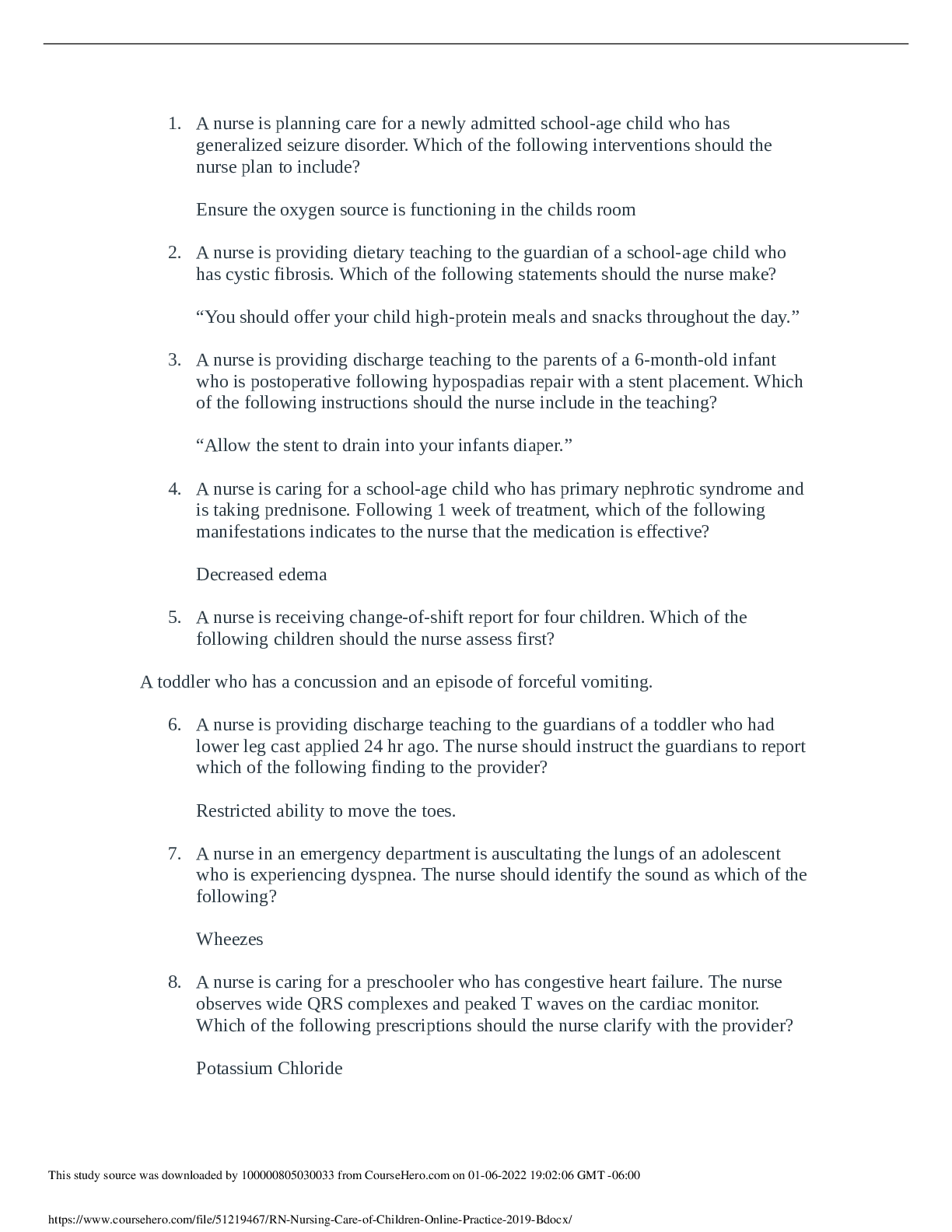
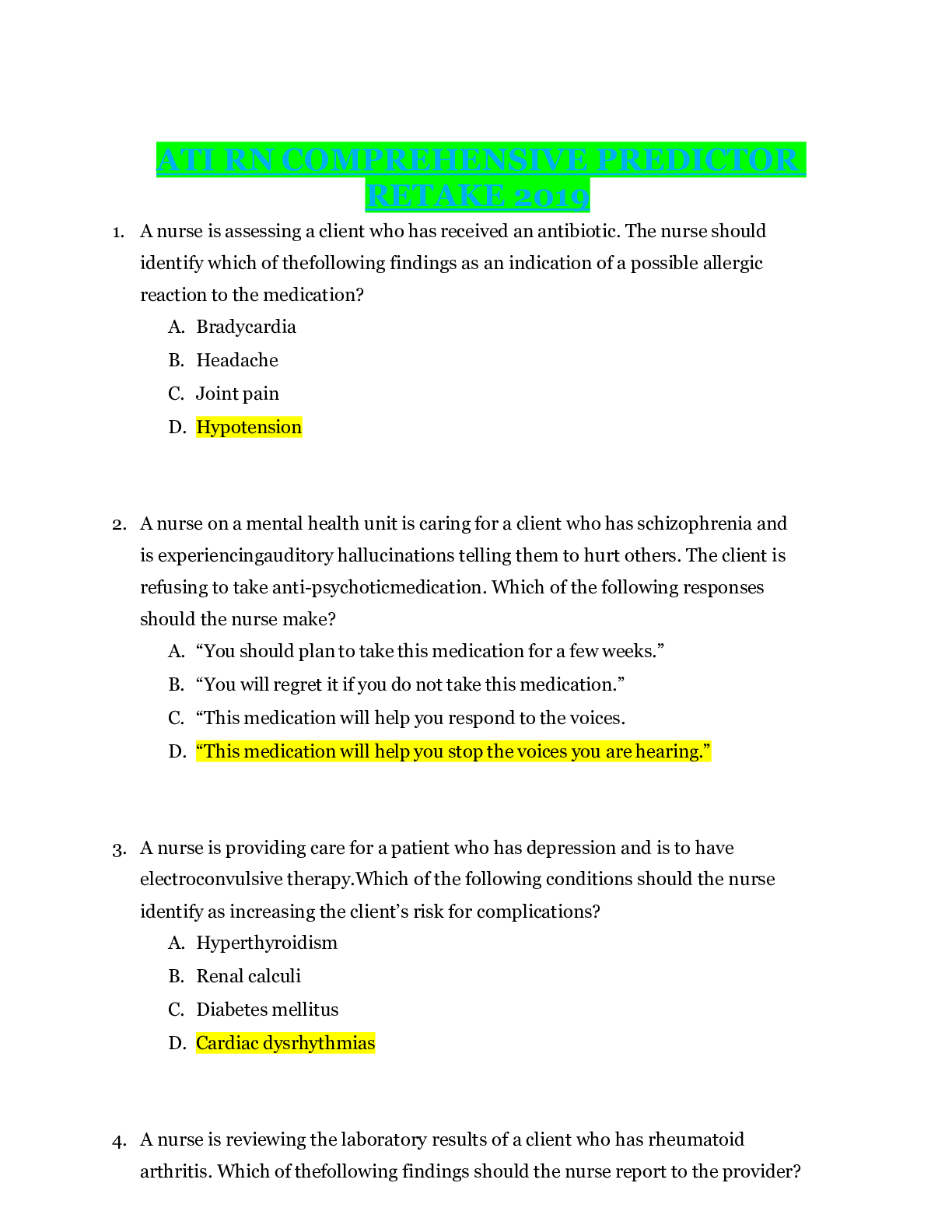

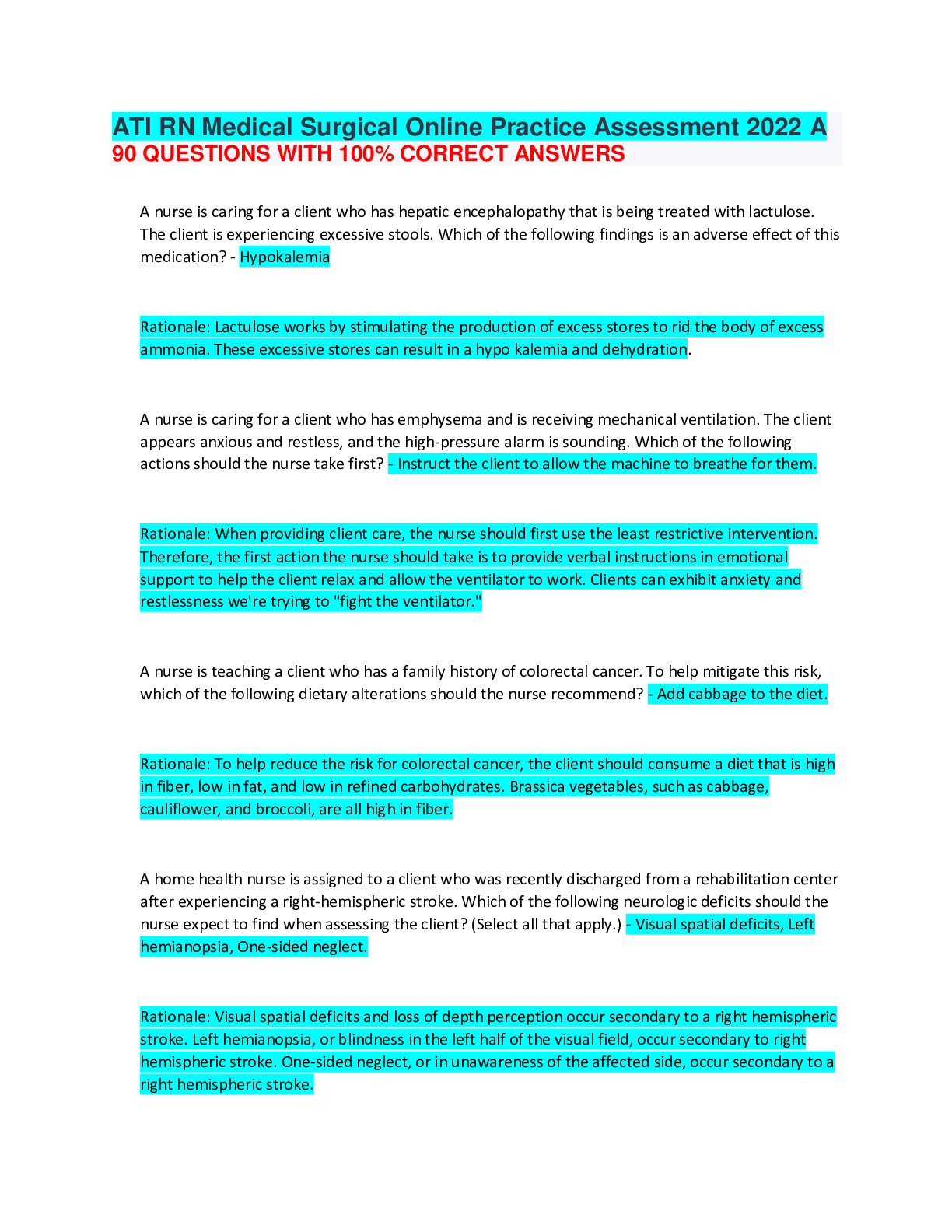

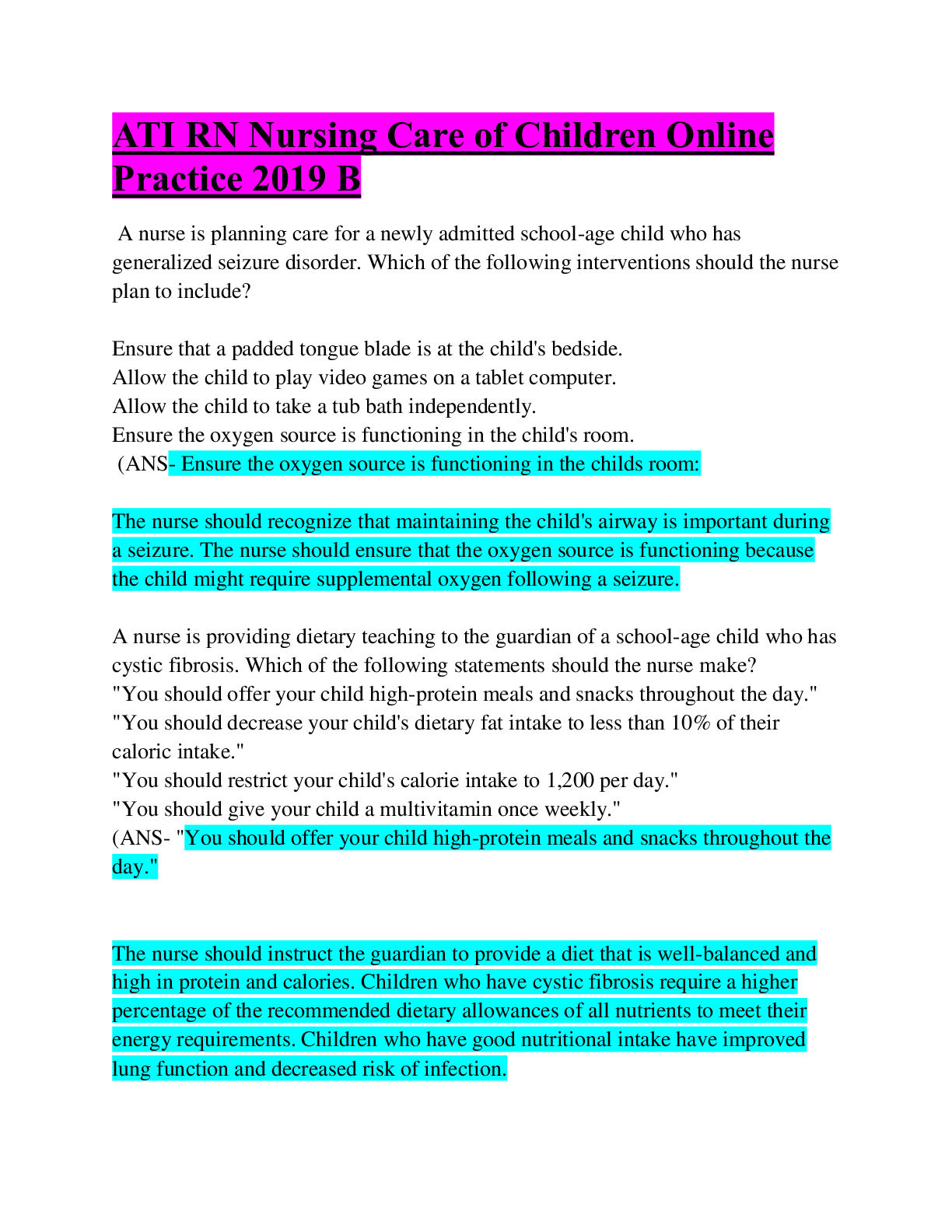
.png)


